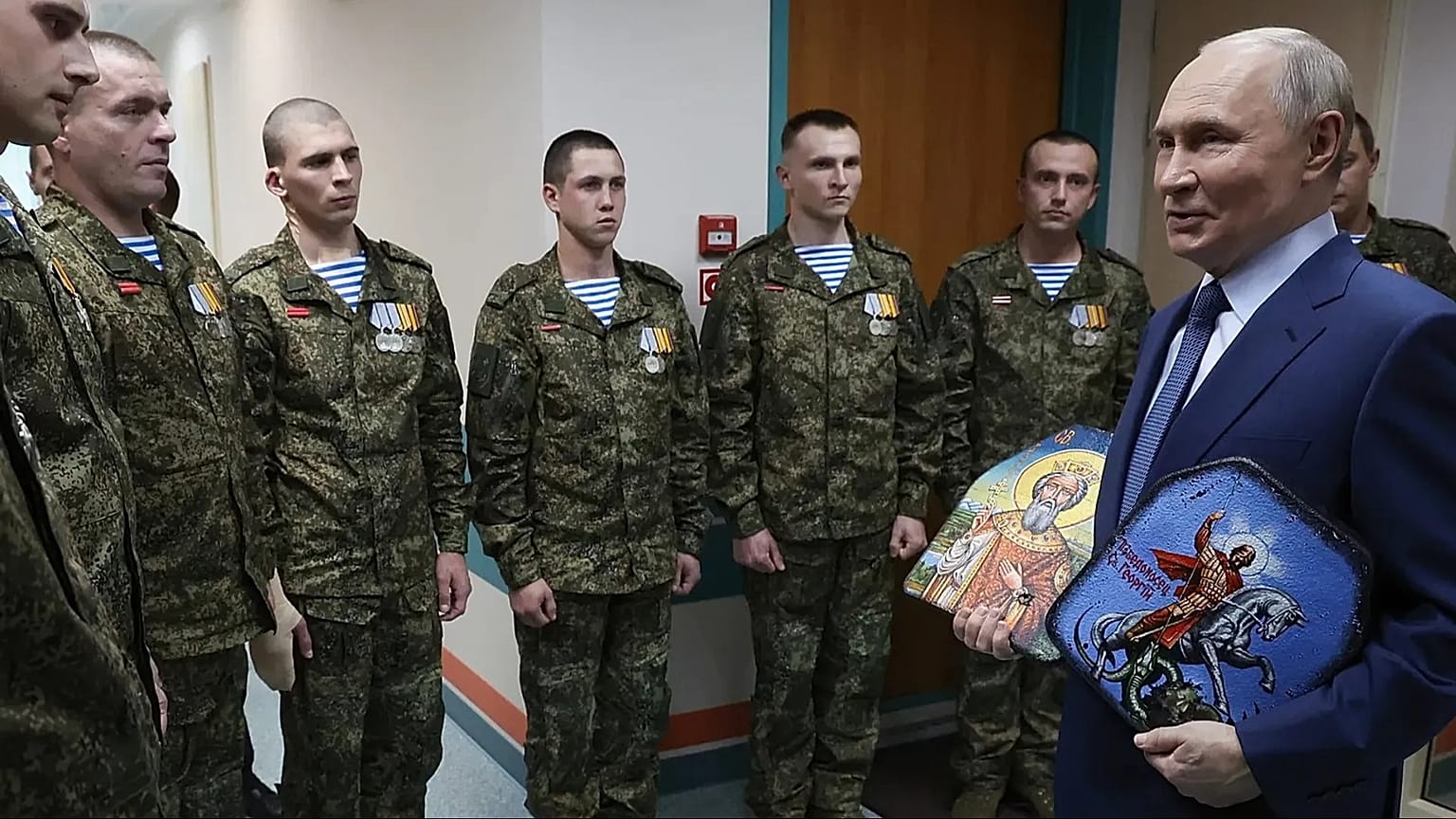Three days after announcing a test of the nuclear-powered Burevestnik missile, Moscow said on Wednesday it also tested Poseidon, a nuclear-capable underwater drone. The second nuclear weapon test in just a week comes as the talks with the US stalled over Moscow’s reluctance to ceasefire in Ukraine.
Russia has conducted a successful test of a new nuclear-powered and nuclear-capable underwater drone, known as Poseidon, President Vladimir Putin announced on Wednesday.
Describing it as a new weapon “which cannot be intercepted,” Putin said the drone has already been dubbed a "doomsday machine".
Speaking at a Moscow hospital where he met the soldiers wounded in Russia’s war against Ukraine, Putin said the Poseidon drone was tried while running on nuclear power for the first time on Tuesday. He also described it as having “unmatched in speed and depth”.
The Russian president said the nuclear reactor that powers the Poseidon is “100 times smaller” than those on submarines, and the power of its nuclear warhead is “significantly higher than that of our most advanced Sarmat intercontinental ballistic missile.”
"For the first time, we managed not only to launch it with a launch engine from a carrier submarine, but also to launch the nuclear power unit on which this device passed a certain amount of time," Putin said.
There was no independent confirmation that such a test took place.
What is Poseidon?
The Kremlin-affiliated media outlets claim that the Poseidon is designed to travel at up to 200 kilometres per hour.
Known in NATO as "Kanyon", and formerly labelled "Status-6" by Moscow, the drone is 20 metres long, 1.8 metres in diameter and weighs 100 tonnes, according to Russian media outlets.
Moscow claims that with the nuclear power giving it an unlimited range, the drone’s speed and depth make it hard to locate.
Putin said the Poseidon's power exceeded that of "even the most promising Sarmat intercontinental-range missile," the so-called SS-X-29, or Satan II.
The Poseidon is one of six new arms — dubbed "super weapons" — the Russian president mentioned in his 2018 state-of-the-nation address.
Russian media reported that the Poseidon was designed to explode near coastlines and unleash a powerful radioactive tsunami.
Nuclear arms race instead of diplomatic talks
Since announcing the six, including the Poseidon and Burevestnik in 2018, Putin has described the super arsenal as a response to the US strategy to build a missile defence shield.
Last Sunday, Putin announced that Russia tested its “unique” Burevestnik nuclear-ready cruise missile, which the Kremlin described as part of efforts to “ensure the country’s national security”.
Together with Russia’s nuclear drills last week, the Burevestnik test over the past weekend and now the Poseidon test just a few days later, is widely seen as a further message to Washington, following Putin's words last week, when he stated Moscow will not cave under US sanctions and pressure.
US President Donald Trump has called the Burevestnik test announcement “not appropriate”, noting also that Moscow is aware that the US has a nuclear submarine deployed "right off their shore".
“(Putin) should get the war ended. A war that should have taken a week is now soon in its fourth year. That's what he should do instead of testing missiles", Trump said on Monday.















